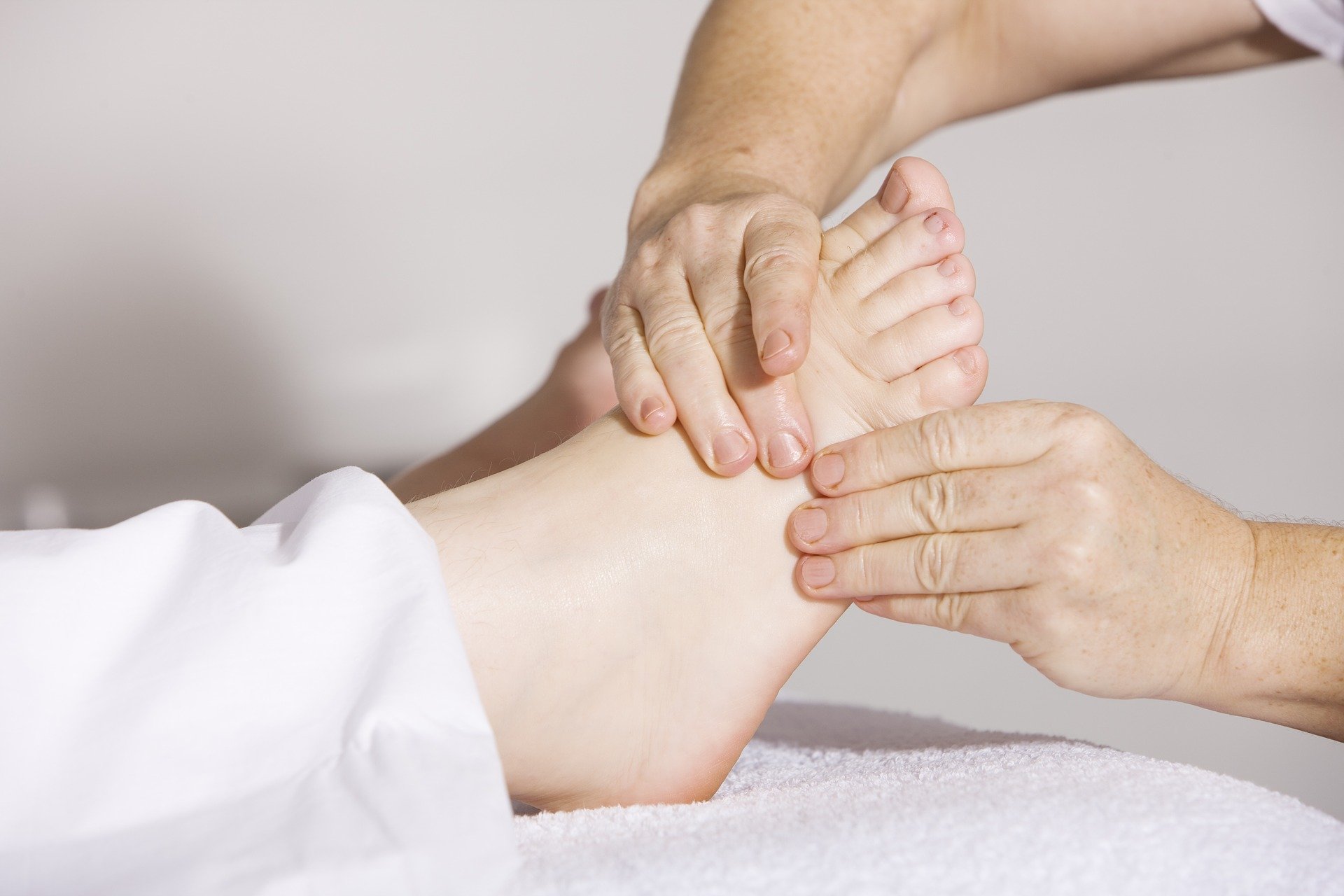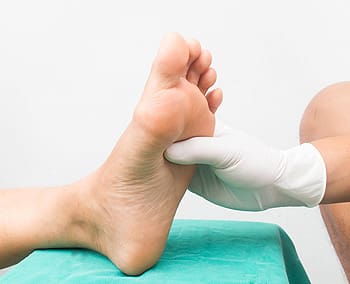
Millions of people are affected with diabetes each year. Diabetes damages blood vessels in all parts of the body, especially the feet. The legs and feet may develop slow blood flow, which causes neuropathy (nerve damage). Once a diabetic patient develops neuropathy, it is important that the feet are well taken care of, or else the lower limbs may have to be amputated. This only happens in drastic cases, but it shows how seriously diabetic foot care should be taken.

Thick, ragged, and distorted nails lacking shine are a sign of toenail fungus. The color of the affected nail tends to be darker due to the buildup of debris underneath the nail. Toenail fungus is more likely to develop for people who wear socks and shoes that do not allow decent ventilation of the feet. Public showers, gyms, and swimming pools are breeding grounds for toenail fungus, as their damp and humid environments allow for the growth of bacteria.
It is very important to always wash and dry the feet thoroughly, especially in between the toes, when diabetic. Secondly, examining your feet and toes for redness or sores must be done, even if you do not feel pain. You may also want to examine your feet from the bottom. Try to avoid wearing colored socks to prevent infections that may occur from the die. Additionally, well-fitting socks are highly recommended.
A diabetic’s physician should always monitor their Hemoglobin A1C levels to test how well the blood sugars are being controlled during the past 3 months. It is very important to keep blood sugar levels at normal range, 70-110mg/dl. In addition to giving advice about everyday eating habits and foot care, a physician may prescribe medicine to help with neuropathy of a diabetic patient. It is also advised to see a podiatrist if experiencing any feet conditions. Toe nails may also need to be taken care of by a podiatrist, since some patients may cut too deep around the cuticles, causing infection.
A person can take care of their feet at home by following the instructions of their physician. Using creams on one’s feet is also an effective way to heal dryness. When using tools to remove calluses, use caution, as severe diabetics may not be able to feel pain on their feet. If any complications arise do not hesitate to call a podiatrist.
On a daily basis, diabetic feet must be checked. If you are ever concerned about something, contact your health care professional. You never want to wait until a wound gets too bad to treat. If left untreated, gangrene may develop. Gangrene is a serious infection that can cause in diabetics that can lead to sepsis or amputation. It is also important for diabetics to be on the lookout for ulcers. Ulcers are sores that develop from tissue loss on the skin. They can be quite painful and require intensive treatment. Early treatment and everyday inspection are imperative to staying healthy.
Easy appt booking, and I was seen right away. The doctor was incredibly nice and extremely informative. Would highly recommend.
I was warmly welcomed and Heard from Dr. Jacoby. My first bone spur, walking in a boot quite an experience but comfort in walking . Having faith that surgery won't be needed. On a search for new orthopedic work shoes
Dr Jacoby is a rockstar! he has done multiple surgeries no both my feet i'm 55 year young and work on my feet this man is keeping me going!
The office is great and in a good location. The support staff was very friendly. Dr Jacoby was knowledgeable, kind and timely.
Came back to see Dr. Jacoby after a few years away, and it was great to visit with him and have him do his usual good work. (We did forget a spot on the other foot, but that's because we were having too much fun visiting). Thanks Dr. Jacoby...good to see you again. I'm glad to be back!
Very smart doctor with great patient skills. Spent extra time with me to go over my options for therapy. Very knowledgeable and made me feel comfortable. Thank you Dr Jacoby!

We offer a wide range of Poditary Services.
Heel pain can be difficult to deal with, especially if you do not know what the underlying cause is.
More DetailsPlantar warts are growths that typically appear on the heels or other weight-bearing areas of the feet.
More DetailsAn ingrown toenail is a nail that has curved downward and grown into the skin.
Millions of people are affected with diabetes each year. Diabetes damages blood vessels in all parts of the body,
More DetailsPlantar warts are growths that typically appear on the heels or other weight-bearing areas of the feet.
More DetailsDiabetics must be wary of all wounds, regardless of depth or size. Diabetes, a chronic disease in which the body cannot
More DetailsLorem ipsum dolor sit amet, consectet commodi sit veniam adipisicing. Sint eius inventore magni quod voluptate.
More DetailsServing as the foundation of the body, the feet carry all the body’s weight and are therefore prone to experiencing pain and
More DetailsWhile proper foot care is important for everybody, senior citizens have the tendency to be more susceptible to certain conditions.
More DetailsThe Achilles tendon is the strongest tendon in the human body. Its purpose is to connect the lower leg muscles and calf to the heel of
More DetailsDiabetes affects millions of people every year. Blood vessels located all over the body are damaged due to diabetes—even the
More DetailsHeel spurs are the result of calcium deposits that cause bony protrusions on the underside of the heel. Heel spurs are usually painless,
More DetailsLorem ipsum dolor sit amet, consectet commodi sit veniam adipisicing. Sint eius inventore magni quod voluptate.
More DetailsOrthotics are shoe inserts that are meant to correct an irregular walking gait or provide cushioning to the feet.
More DetailsLorem ipsum dolor sit amet, consectet commodi sit veniam adipisicing. Sint eius inventore magni quod voluptate.
More Details